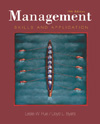 |
1 |  | 
A business that produces goods in two or more countries is called an MBO.
|
|  | A) | TRUE
|
|  | B) | FALSE
|
 |
 |
2 |  | 
The United States has a large trade deficit.
|
|  | A) | TRUE
|
|  | B) | FALSE
|
 |
 |
3 |  | 
Changing US dollars into British pounds is called MRC trading.
|
|  | A) | TRUE
|
|  | B) | FALSE
|
 |
 |
4 |  | 
A country charges a tariff on imported goods so that foreign companies can compete more effectively with local companies.
|
|  | A) | TRUE
|
|  | B) | FALSE
|
 |
 |
5 |  | 
When Chrysler sells its cars in France, this is an example of Chrysler exporting its cars. |
|  | A) | TRUE |
|  | B) | FALSE |
 |
 |
6 |  | 
If a US company refuses to build a plant in a foreign country because it disagrees with the way that that country treats its citizens, this is an example of a position based on:
|
|  | A) | human rights.
|
|  | B) | GATT.
|
|  | C) | NAFTA.
|
|  | D) | all of the above.
|
 |
 |
7 |  | 
When a country exports more goods than it imports, it has a trade:
|
|  | A) | quota.
|
|  | B) | surplus.
|
|  | C) | deficit.
|
|  | D) | tariff.
|
 |
 |
8 |  | 
All of the following are members of NAFTA EXCEPT:
|
|  | A) | United States
|
|  | B) | South America
|
|  | C) | Canada
|
|  | D) | Mexico
|
 |
 |
9 |  | 
Exchanging US dollars for euros is an example of a(n) ______ exchange rate.
|
|  | A) | foreign
|
|  | B) | tariff
|
|  | C) | import
|
|  | D) | export
|
 |
 |
10 |  | 
Suppose that a U.S. company wants to do business in France where the exchange rate for the euro is 1.05 to the dollar. This means that one dollar is worth ______ euros. |
|  | A) | 1.05 |
|  | B) | 0.95 |
|  | C) | 0.85 |
|  | D) | none of the above |
 |
 |
11 |  | 
Suppose that a U.S. company wants to do business in Italy where the exchange rate for the rate for the euro is 1.05 to the dollar. This means that one euro is worth ______ dollars. |
|  | A) | 1.05 |
|  | B) | 0.95 |
|  | C) | 0.85 |
|  | D) | none of the above |
 |
 |
12 |  | 
Suppose that a U.S. company wants to do business with a Japanese company when the exchange rate for the Japanese yen is 110 to the dollar. This means that one dollar is worth ______ yen. |
|  | A) | 110 |
|  | B) | 0.009 |
|  | C) | 0.09 |
|  | D) | none of the above |
 |
 |
13 |  | 
Suppose that a U.S. company wants to do business with a Japanese company when the exchange rate for the Japanese yen is 110 to the dollar. This means that one yen is worth ______ dollars. |
|  | A) | 110 |
|  | B) | 0.09 |
|  | C) | 0.009 |
|  | D) | none of the above |
 |
 |
14 |  | 
When a U.S. company sells its goods in Canada, this is called:
|
|  | A) | importing.
|
|  | B) | creating a tariff.
|
|  | C) | exporting.
|
|  | D) | following a quota.
|
 |
 |
15 |  | 
If a U.S. company insists on labor standards at a certain level in order for it to do business in a foreign country, this is an example of a(n) ______ principle.
|
|  | A) | human rights
|
|  | B) | importing
|
|  | C) | exporting
|
|  | D) | licensing
|
 |
 |
16 |  | 
When a US company buys goods in England and sells them in the US, this is an example of the US company using a(n) ______ strategy.
|
|  | A) | import
|
|  | B) | tariff
|
|  | C) | export
|
|  | D) | quota
|
 |
 |
17 |  | 
What percentage of the world's population lives in the U.S.?
|
|  | A) | 1%
|
|  | B) | 5%
|
|  | C) | 20%
|
|  | D) | None of the above
|
 |
 |
18 |  | 
When the U.S. imports more goods than it exports, this means that the U.S. has a trade ______ .
|
|  | A) | surplus
|
|  | B) | quota
|
|  | C) | deficit
|
|  | D) | tariff
|
 |
 |
19 |  | 
When the U.S. bans U.S. companies from exporting goods to Iraq, and also bans goods from Iraq from being exported to the U.S., a(n) _____ exists.
|
|  | A) | quota
|
|  | B) | tariff
|
|  | C) | embargo
|
|  | D) | trade deficit
|
 |
 |
20 |  | 
When a U.S. company purchases goods from Mexico and resells them in the U.S., this is an example of the U.S. company using a(n) ______ strategy.
|
|  | A) | importing
|
|  | B) | exporting
|
|  | C) | embargo
|
|  | D) | tariff
|
 |



 2003 McGraw-Hill Higher Education
2003 McGraw-Hill Higher Education